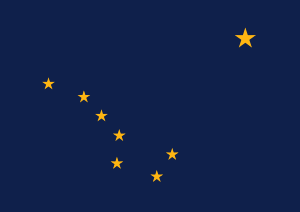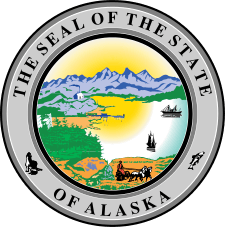Frederick Schwatka

Frederick Gustavus Schwatka (29 September 1849 – 2 November 1892) was a United States Army lieutenant[1] with degrees in medicine and law and a noted explorer of northern Canada and Alaska.
Early life and career

Schwatka was born in Galena, Illinois the son of Frederick Gustavus Sr. and Amelia (Hukill) Schwatka. His father Frederick G. Sr. (1810-1888) was born in Baltimore, Maryland, the son of August and Catherine (Geissendorfer) Schwatke (the original German spelling with the same pronunciation), German Lutheran immigrants from East Prussia (now eastern Poland) and Bavaria, respectively. His mother Amelia Hukill (1812-1885) was born near Bethany, Brooke County, in present-day West Virginia and was of English and Scots descent. When he was 10 his family moved to Salem, Oregon. Schwatka later worked in Oregon as a printer's apprentice and attended Willamette University.[2] He was appointed to the United States Military Academy at West Point in 1867 and graduated in 1871, serving as a second lieutenant in the Third Cavalry in the Dakota Territory. Studying law and medicine simultaneously, he was admitted to the Bar association of Nebraska in 1875 and received his medical degree from Bellevue Medical College in New York in the same year.[3] In 1876, Lt. Schwatka led the initial cavalry charge at the Battle of Slim Buttes.
Search for Franklin's expedition
In 1878–80, at the behest of the American Geographical Society he led an expedition to the Canadian Arctic to look for written records thought to have been left on or near King William Island by members of Franklin's lost expedition. Traveling to Hudson Bay on the schooner Eothen, Schwatka's initial team included William Henry Gilder, his second in command; naturalist Heinrich Klutschak, Frank Melms, and Joe Ebierbing, an Inuit interpreter and guide who had assisted explorer Charles Francis Hall in his search for Franklin between 1860 and 1869.[4]
The group, assisted by other Inuit, went north from Hudson Bay "with three sledges drawn by over forty dogs, relatively few provisions, but a large quantity of arms and ammunition."[5] They interviewed Inuit, visited known or likely sites of Franklin Expedition remains, and found a skeleton of one of the lost Franklin crewmen. Though the expedition failed to find the hoped-for papers, in a speech at a dinner given in Schwatka's honor by the American Geographical Society in 1880, he noted that his expedition had made "the longest sledge journey ever made both in regard to time and distance"[6] of eleven months and four days and 2,709 miles (4,360 km) and that it was the first Arctic expedition on which the whites relied entirely on the same diet as the Inuit.[7]
Later career
In 1883, he was sent to reconnoiter the Yukon River by the US Army. Going over the Chilkoot Pass, his party built rafts and floated down the Yukon River to its mouth in the Bering Sea, naming many geographic features along the way. At more than 1,300 miles (2,092 km), it was the longest raft journey that had ever been made.[8] Schwatka's expedition alarmed the Canadian government, which sent an expedition under George Mercer Dawson to explore the Yukon in 1887. Beginning in 1886, Schwatka led two private expeditions to Alaska financed by William D. Boyce[9] and three to northeastern Mexico and published descriptions of the social customs and the flora and fauna of these regions.[10]
Schwatka received the Roquette Arctic Medal from the Geographical Society of Paris, and a medal from the Imperial Geographical Society of Russia. He was an honorary member of the Geographical Societies of Bremen, Geneva, and Rome.[11]
Works
Schwatka’s book-length publications include Along Alaska’s Great River (1885) and The Search for Franklin (1882), republished in 1965 as The Long Arctic Search.
Death
He died in Portland, Oregon at the age of 43 in 1892. The New York Times reported his death as the outcome of an accidental overdose of morphine[1] but the Coconino Sun of Coconino county (Flagstaff), Arizona listed his death as a suicide by laudanum.[12] Schwatka was buried in Salem, Oregon.
Legacy
Schwatka Lake in Whitehorse, Yukon, is named after him, as is Mount Schwatka, Alaska. In 2007, an Arctic Sharps rifle commemorating Frederick Schwatka was begun by a group of prominent American gunsmiths. Engraved by Barry Lee Hands, the rifle depicts scenes from the arctic adventures of Schwatka (See "External Links" below). Since 1960,[13] the cruise boat the MV Schwatka has ferried passengers along the Yukon River through Miles Canyon to Schwatka Lake.[14]
References
- 1 2 "Lieutenant Schwatka's Death Accidental" (PDF). New York Times. New York. November 4, 1892. Retrieved March 5, 2008.
- ↑ Davis, Richard C. (September 1984). "Arctic Profiles: Frederick Schwatka. (1849- 1892)" (PDF). Arctic. 37 (3): 302. doi:10.14430/arctic2209.
- ↑ Schwatka (1965), p. 14
- ↑ Schwatka (1965), pp. 13–15
- ↑ Savours (1999), p. 301
- ↑ Schwatka (1965), pp.115–116
- ↑ Schwatka (1965), p. 116
- ↑ Sandler (2006), pp. 247–48
- ↑ Petterchak (2003), pp. 9&ndsash;10
- ↑ Sandler (2006), p. 248
- ↑
 Wilson, James Grant; Fiske, John, eds. (1900). "Schwatka, Frederick". Appletons' Cyclopædia of American Biography. New York: D. Appleton.
Wilson, James Grant; Fiske, John, eds. (1900). "Schwatka, Frederick". Appletons' Cyclopædia of American Biography. New York: D. Appleton. - ↑ Ash, Susan L. (Pinky) Rogers (1975). The Coconino Sun, subject index, 1892. Northwestern Arizona University Library. Retrieved September 1, 2008.
- ↑ Scott, John D. (1981). A Life in the Yukon. Whitehorse. pp. 118–122.
- ↑ "MV Schwatka". Yukon Alaska Tourist Tours. Retrieved March 18, 2010.
Works cited
- Petterchak, Janice A. (2003). Lone Scout: W. D. Boyce and American Boy Scouting. Rochester, Illinois: Legacy Press. ISBN 0-9653198-7-3.
- Sandler, Martin (2006). Resolute: The Epic Search for the Northwest Passage and John Franklin, and the Discovery of the Queen's Ghost Ship. New York: Sterling Publishing Co. ISBN 978-1-4027-4085-5
- Savours, Ann (1999). The Search for the North West Passage. New York: St. Martin's Press. ISBN 0-312-22372-2
- Schwatka, Frederick (1965). The Long Arctic Search. Ed. Edouard A. Stackpole. New Bedford, Mass.: Reynolds-DeWalt
Further reading
Books
- Coleman, E.C. (2006). The Royal Navy in Polar Exploration from Franklin to Scott. Tempus Publishing
- Schwatka, Frederick (1885). Along Alaska's Great River. New York: Cassell & Company
- Schwatka, Frederick (1894). A Summer in Alaska. St Louis, Missouri: J.W. Henry
- Schwatka, Frederick (1886). Children of the Cold. New York: Cassell & Company
- Schwatka, Frederick (1893). In the Land of Cave and Cliff Dwellers. New York: Cassell & Company
- Schwatka, Frederick (1885). Nimrod in the North. New York: Cassell & Company
Articles
- Schwatka, Frederick. "Among the Apaches", Century Magazine, Vol. XXXIV (May 1887)
External links
- Biography at the Dictionary of Canadian Biography Online
- "The Arctic Sharps" an American Legend
- UAM:EH:UA68-029-0001AB, a camera used by Schwatka in 1886

